Everything you want to know about spy balloons, or any balloon, in the sky | Maag
From the moment a white orb was spotted floating 60,000 feet over Montana, people on Twitter and cable news demanded the Biden administration shoot it down. When Biden did not, choosing instead to wait until the craft had descended to 50,000 feet over the coast of South Carolina before sending in an F-22 fighter jet, the forces of professional outrage sputtered themselves into an around-the-clock tantrum.
Leading the charge was Tucker Carlson, who spun the simple story of the big balloon into a convoluted yarn, alleging without evidence that the craft was allowed to fly over the United States because “the Chinese government . . . did send cash to Joe Biden's crackhead son, and apparently to Joe Biden himself, and that paid off.”
People with decades of experience in the stratosphere suggest a simpler reason why the Biden administration may have chosen to wait: Hitting anything that high up is really hard.
“At 60,000 feet, it’s really tough for a fighter jet to shoot it down,” said John Powell, founder and president of JP Aerospace, which has flown airships to the stratosphere for 37 years.
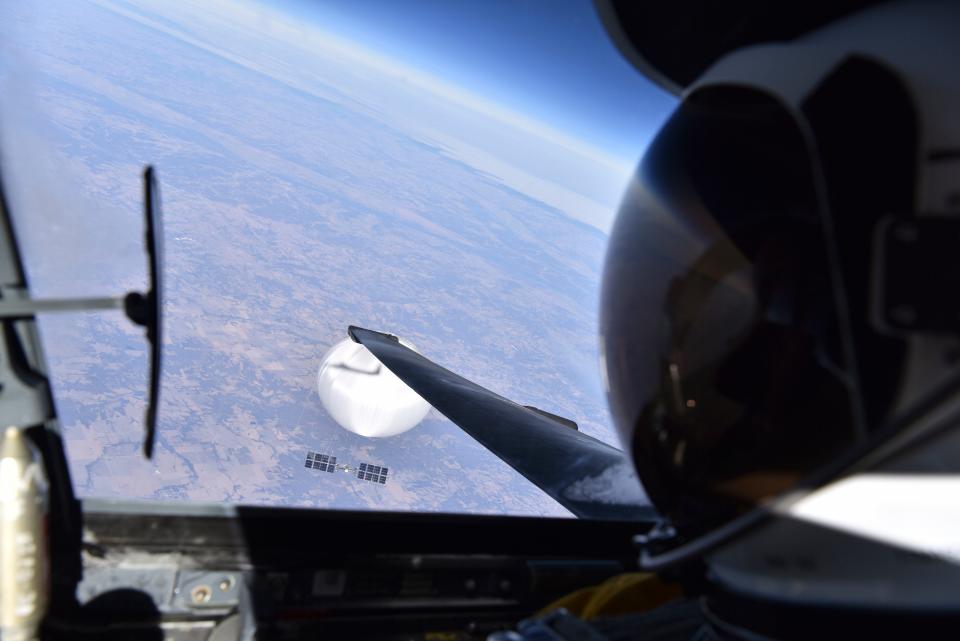
“The higher you go up, the harder it is to shoot down,” said Kuan-Wei Chen, a professor of space law at Bond University in Australia. “That’s why they had to use an F-22. Because the older-generation fighters can’t fly that high.”
The truth is, the stratosphere is a region where rules are malleable, weak and few.
And this incident points to the widening gulf between law and technology in the stratosphere. The 1944 Chicago Convention on International Civil Aviation holds that every nation “has complete and exclusive sovereignty over the airspace above its territory.”
The Outer Space Treaty of 1967 declares space open and free for exploration by all nations.
But where does sovereign airspace end, and space begin?
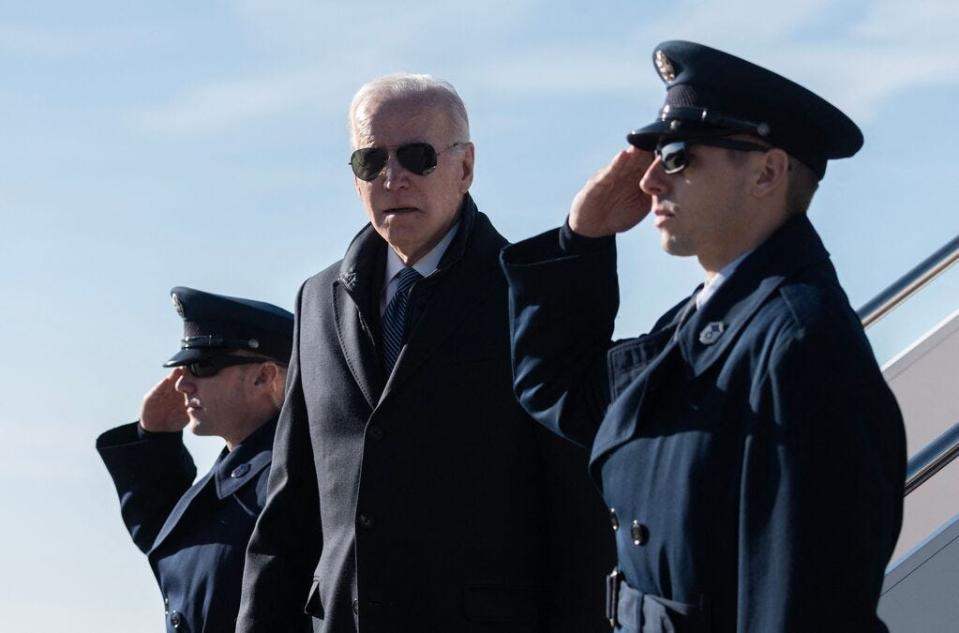
“That’s a gray area,” said Steven Pifer, a senior fellow studying arms control and nonproliferation with the Brookings Institution who formerly served as President Bill Clinton’s ambassador to Ukraine. “How high up does a country’s sovereignty go? Where does it become space? That’s a big question now.”
Unlike high-altitude aircraft, which emit a powerful blast of heat for missiles to chase, balloons and airships function at the same cold temperatures of the stratosphere. This makes them harder to shoot, said Bill Brown, an educator in Alabama who engineers both high-altitude balloons for students and missiles for the American military.
Let’s say an F-22 can shoot down a balloon hovering at 70,000 feet. That’s 21 kilometers above the Earth. The Pentagon and NASA maintain that space begins far above that, at 50 kilometers. (Other nations disagree, placing the atmospheric border at the Karman Line, 100 kilometers up.) At minimum, then, the operators of high-altitude aircraft have 29 kilometers of free airspace in which to fly, unencumbered by the merciless vacuum of space above or the threat of missiles below.
So that’s precisely where they’re heading.
The stratosphere is growing crowded, said Tom Karako, a senior fellow at the Center for Strategic and International Studies, regarded as the world’s best military think tank. Hobbyists, academics, private companies and militaries around the world are building a new generation of vehicles capable of flight at the highest altitudes of near-space.
And nobody can stop them.
“There’s all this stuff going up there,” Karako said.
More perspective:President Biden is dividing America with his hatred of balloons. Is nothing sacred?
The Party City International Space Station
Neumayer III is a German research station perched on the ice of Antarctica. In November, Todd McKinney traveled from his home in Huntsville, Alabama, to the Neumayer station, where he conducted a series of high-altitude experiments. His goal: Fly sensors 80,000 feet above Antarctica, testing the accuracy of scientific models for wind patterns across the continent.
His tools: Eight shiny little balloons. Have you ever walked into a Party City and noticed the helium balloons pinned against the ceiling?
Yup. That kind.
“Party balloons are low weight, low cost. You can do a lot of flights and get a lot of great data back,” said McKinney, a graduate student in atmospheric research at the University of Alabama, Huntsville. “They made multiple circumnavigations of the southern hemisphere. Two of them are still up and reporting data. It was so cool to see the curvature of the earth from that height.”
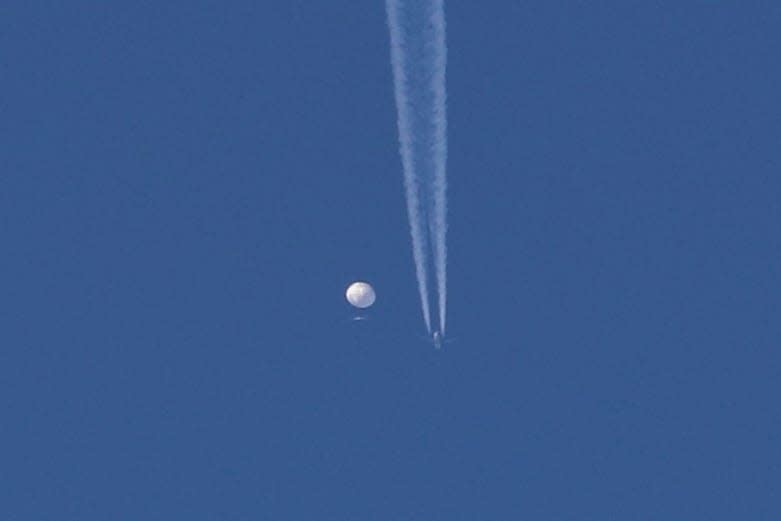
McKinney’s ballooning mentor is Bill Brown, who estimates he’s flown 700 high-altitude missions. Most involve science experiments built by students in elementary, middle and high schools around the United States. Brown’s balloons have sent bananas and Moonpies to the edge of space. The bananas returned brown and mushy. The Moonpies came back half their original size, Brown said, but tasted twice as good.
After the air force shot down the Chinese spy balloon, its commanders went on a shooting frenzy. American fighter jets took out an unidentified object over northern Alaska, another over the Yukon, and a third above Lake Huron. Comparing the Pentagon’s descriptions of the Yukon incident with the flight paths of his own educational missions, Brown believes it's possible the air force sent a $143-million F-22 Raptor fighter jet to intercept a party balloon carrying a payload of science experiments designed by high school students in Minnesota.
“It was a $100 science experiment on a $20 party balloon,” Brown said. “If that’s what happened, it’s just nutty. That’s an unbelievable overreaction.”
More from Maag:How can Paterson ever stop its endless murders and shootings?
Wide open
If it is proved that our nation’s leaders took their missile takedowns a little too far, perhaps it’s because they finally opened their eyes to the stratosphere and took a good look around. Normally, military and civilian radar and other sensory equipment is tuned to display only fast-moving aircraft like planes and helicopters, Brown said, while filtering out millions of smaller things that wander slowly across the sky.
After the Chinese spy balloon caused such intense outrage, however, the American military “basically opened the filters,” a U.S. official told The Washington Post. This may have caused all kinds of new and strange-looking things to appear, Brown said, possibly including birds, party balloons, or even experimental airships.
“These types of experiments have been flying for years,” Brown said of airship and balloon flights by his colleagues in the intersecting worlds of high-altitude academia and commerce. “Normally their filters would filter all that out, because there’s no payload that size that could be used as an attack weapon.”
In the wide-open world of the stratosphere, China’s surveillance balloon clearly violated the only rule that applies: If one country wishes to fly an aircraft over another, it must ask the other nation’s permission. (In practice even this simple rule functions more like a suggestion, since most slow-moving objects in the middle and upper strata of the stratosphere can’t even be detected, let alone shot down.)
Years before the Chinese balloon incident, however, experts in air and space law suggested the stratosphere could use a few more rules. If two high-altitude balloons are about to collide, which has right of way? If one balloon is crewed and the other unmanned, how should they communicate? And what to do about airships, which — unlike balloons — can control their altitude and flight path, and are completely unregulated?
In normal civilian airspace, Chen said, the rules governing such interactions are written by the International Civil Aviation Organization, a unit of the United Nations.
In the stratosphere, no such rules exist.
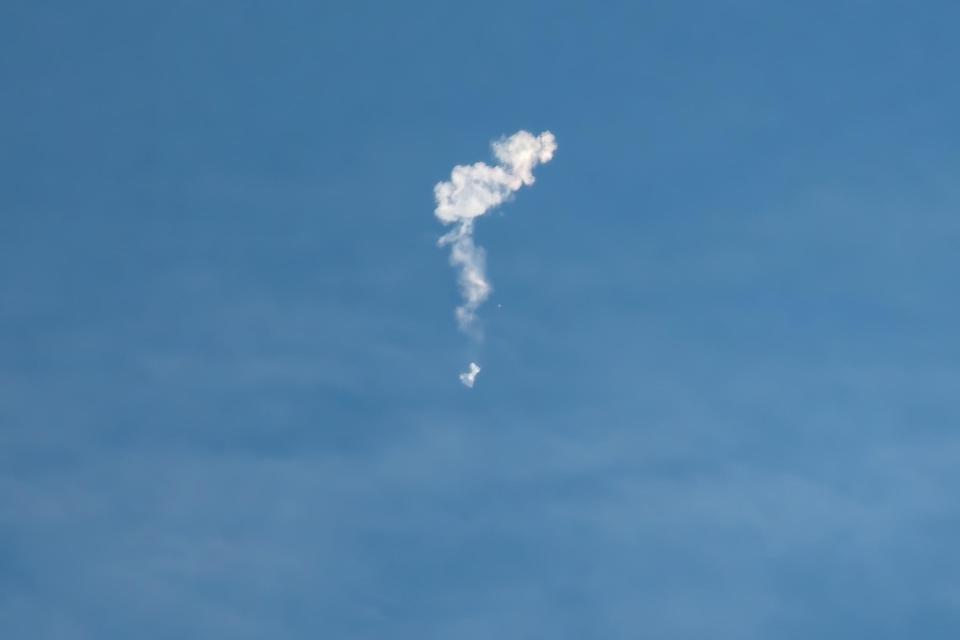
“We’re seeing an increase in the number of balloons and other aircraft operating at that altitude,” Chen said. “Countries are beginning to say we need to be on the ball here, and start recognizing the potential security and strategic threats.”
New Zealand enacted a law in 2017 requiring all parties to obtain a license before launching a high-altitude vehicle. After the spy balloon incident, Biden assigned national security adviser Jake Sullivan to lead a task force to create new rules for federal agencies responding to unidentified objects.
Sen. Mark Kelly, the Arizona Democrat, is a former astronaut and military pilot who once saw shiny party balloons from the cockpit of his Navy jet. Last month, Kelly announced he will introduce legislation that would require all weather and research balloons to carry transponders, communicating their position and purpose to air traffic controllers and the military.
“I don’t think we want to get into the business of launching AIM-9X [missiles] — at $400,000 a pop — at weather balloons,” Kelly told the Associated Press.
Balloonists worry regulation will make research more difficult. Aerospace transponders would consume precious space and electricity aboard small academic balloons, which FAA rules prohibit from carrying payloads heavier than 12 pounds into lower commercial airspace, said Matthew Nelson, president of the Stratospheric Ballooning Association.
“I’m just hoping in a few weeks this blows over,” said Nelson, an engineering professor at Iowa State University, said of the Chinese balloon hysteria.
Other stratospheric researchers fear the government might require them to obtain a permit for every flight, or impose other bureaucratic rules that will add cost and slowness to their work.
“We’ve had FAA regulations for decades, and there hasn’t been a single balloon accident in known history,” McKinney said. “If we put more regulations on balloons, it’s going to hurt scientists and students for no good reason.”
Heavy science: It floats
As it stands now, the low cost of high-altitude balloon flight is perhaps its greatest advantage. The Hadron Collider is one of the largest science experiments ever built. It consists of a tunnel 17 miles round, buried hundreds of feet below the Alps. Constructing it cost $17.4 billion. Its purpose: Recreate the conditions of the stratosphere, where intergalactic cosmic rays slam into the Earth’s atmosphere at nearly the speed of light.
Erick Agrimson, a physicist at Saint Catherine University in Saint Paul, Minnesota, conducts similar experiments for a few hundred bucks. Working with colleagues at the University of Minnesota, Agrimson tied 11-pound instruments to a flock of Hwoyee-brand weather balloons, currently on sale for $119.99.
“You save $36.00!” reads a current ad for the balloons on scientificsales.com.
The balloons were launched from the middle of Nebraska on Aug. 21, 2017. They climbed to the Regener-Pfotzer Maximum, where cosmic rays slam into earth’s atmosphere, creating a field of intense radiation. The zenith of each balloon’s flight was timed to coincide with a total solar eclipse.
Even as an eerie yellow darkness raced across the northern hemisphere, 20 miles below, Agrimson’s sensors detected no decrease in solar radiation.
“Unless you have a particle accelerator, this is really one of the only ways you can study that,” Agrimson said.
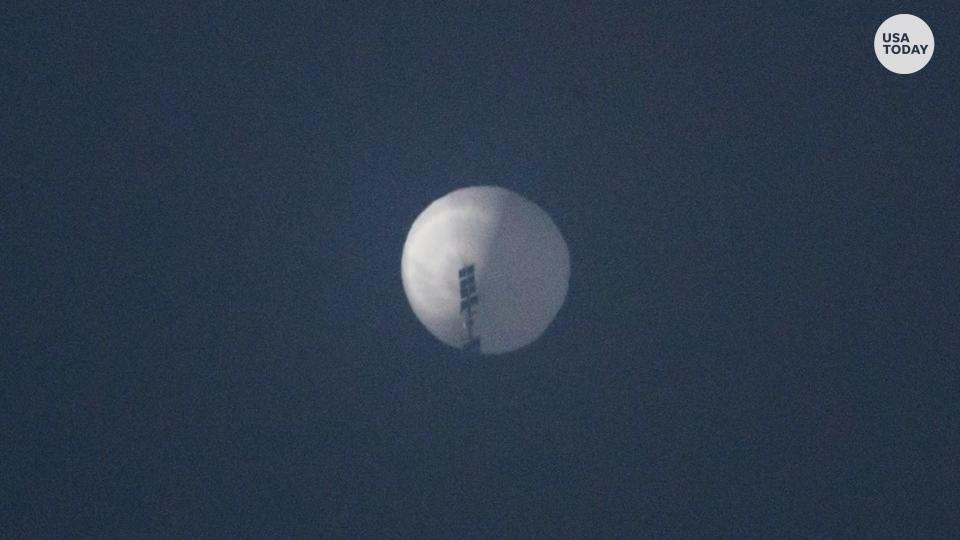
Brian Rauch conducts similar experiments in Antarctica, except his sensor weighs three tons. It also has a cool name: The SuperTIGER-II. For decades, scientists have understood that the Earth, the solar system, and all the galaxies are comprised of gunk formed in the guts of stars. When stars go supernova and explode, that gunk emanates into the universe in the form of cosmic rays.
Are there other ways for intergalactic stuff to get here? In late 2021, Rauch connected a huge, milky white balloon to a sensor that resembled an upside-down shopping cart. The balloon circled Antarctica for 33 days, scooping up cosmic rays with heavier elements emanating from a new source: The slamming-together of stars, which physicists call a neutron star capture. Rauch’s colleagues considered this result such a success, he won a coveted slot to place his next particle sensor on the International Space Station in 2026.
“Where does all the material in our world come from? How is it made?” said Rauch, a physics professor at Washington University in Saint Louis. “Ballooning is relatively cheap access to near-space. So there’s room for people to try new things.”
More from Maag:Some riders throw money. Others throw orange soda. The kings of subway dance endure
Balloons for profit
Scientists think balloons can save a few bucks; entrepreneurs think balloons can make a few bucks. Two companies, Space Perspective of Florida and World View of Arizona, are competing to offer the first passenger trips to the stratosphere. Both are testing prototype balloons at around 100,000 feet, adding to the globe’s unregulated stratospheric clutter.
The balloons will carry heavy pressurized capsules with big windows, recliner chairs, telescopes, bathrooms, and room for up to eight passengers.
Space Perspective is accepting $1,000 as a deposit toward one of its first flights, which the company says may begin next year and cost $125,000 per traveler. World View charges $500 for a deposit and $50,000 per seat, making it the first bargain airline of the stratosphere. The company has received 1,250 deposits, CEO Ryan Hartman told the Washington Post, even though its first flight is not yet scheduled.
In the meantime, World View has entered the increasingly crowded field of remote sensing. Low-earth satellites whip through space at about 17,000 miles an hour. Planes run out of fuel; drone batteries die. World View and competitors including New Mexico-based Sceye promote high-altitude balloons as a compromise. World View claims its balloons can hover in place for 45 days, providing clear images of the ground down to 5 centimeters.
Imagine the precision — and drudgery — of surveilling a double-A battery from 13 miles up.
Possible uses include scanning power lines for maintenance problems, or helping farmers decide when to water their fields. But the bonanza may lie in telecom. Google, Lockheed Martin, Airbus and the Chinese military together invested hundreds of millions of dollars in balloons they hope will compete with satellites as the primary platform for internet service, said John Powell, who spent several years developing his own airship-based telecommunications platforms.
“They all sunk tons of money into it,” Powell said. “They thought it would replace satellites and become the next trillion-dollar industry.”
This spending spree is another reason experienced balloonists did not engage in Tucker Carlson-esque freakouts about China’s spy balloon. Alphabet, Google’s parent company, spent a decade on Loon, a subsidiary that tried to extend internet access to remote places around the world. Loon’s signature craft was a white superpressure balloon that stood nearly 200 feet tall and carried a payload the size of three buses. . .
. . . just like a certain infamous balloon from China, Brown said.
“It is an exact copy of the Google Loon vehicle,” said Powell, right down to the number of panels in its solar array.
After some early confusion, Pentagon officials came to agree the balloon was used for surveillance.
“We are 100 percent clear about that," Brig. Gen. Pat Ryder said at a press conference.
Until the Biden administration releases more information about the aircraft’s payload, however, many balloonists remain skeptical.
“I don’t think it’s a military vehicle,” Powell said. “My guess is that it was an experimental telecom vehicle that got away from them, and they were hoping no one would notice. But this is just my guess.”
The threat has changed
The biggest contributor to the stratosphere’s worsening traffic jam is also the oldest. The National Weather Service began using balloons to capture atmospheric data in 1909. Modern weather trackers release nearly 900 balloons into the air twice a day, including 92 from the United States and its territories. The balloons carry small sensors called radiosondes, which measure air pressure, temperature, and humidity from the ground up to about 100,000 feet, where the balloons pop. The radiosondes return gently to Earth, suspended by cute orange parachutes.
“Balloon launches are conducted every day, all around the United States, without a single issue,” McKinney said. “The weather forecasts you see on your phone? Those don’t come from satellites. You can thank weather balloons for providing that data.”
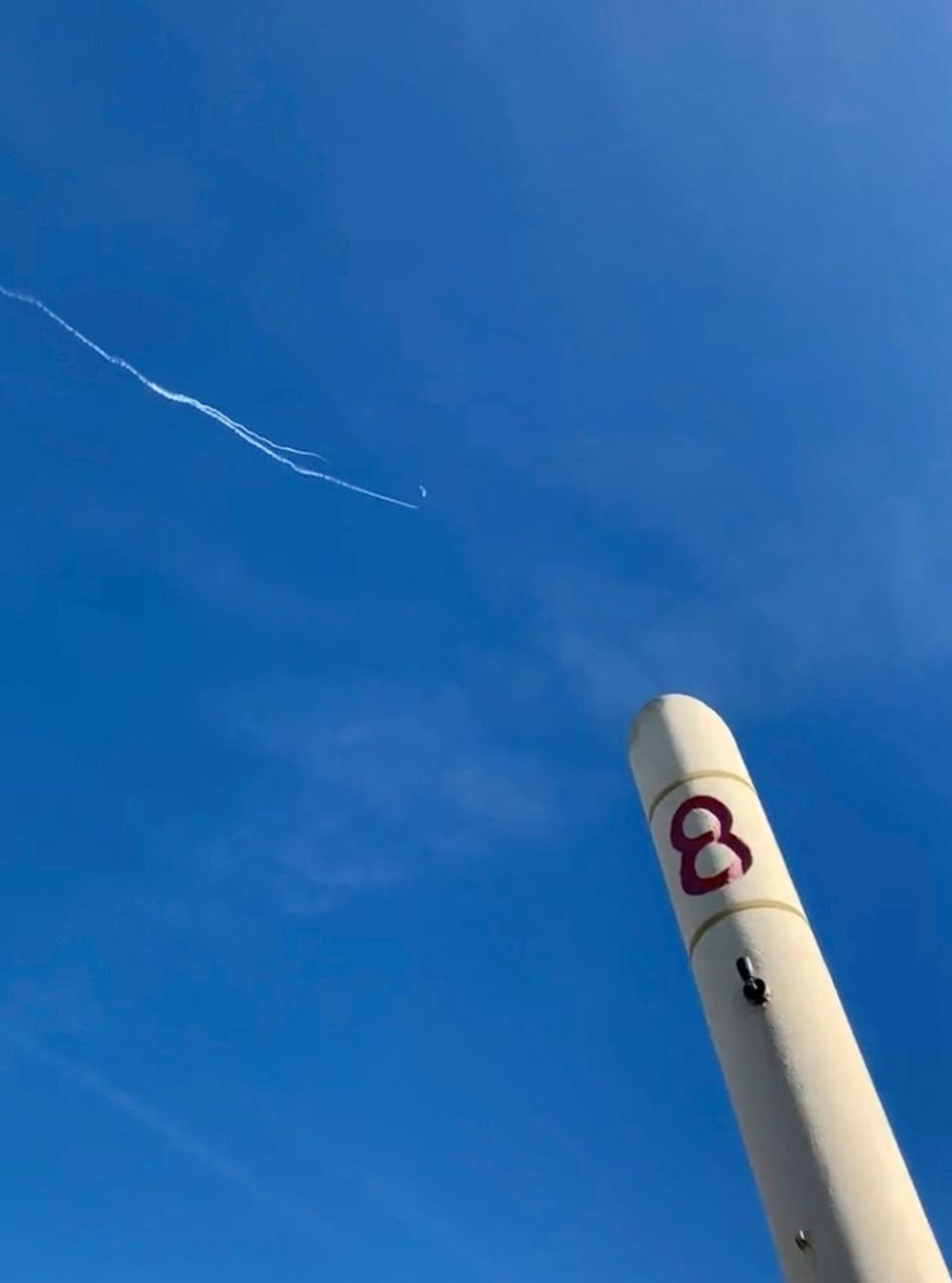
More government balloons may soon join them. In 2020 and 2021, the Pentagon spent $3.8 million to develop new balloons, according to Politico. That will increase to $27 million in 2023.
Military leaders expect those numbers to multiply. Since the Cold War, the United States and Canada have tuned their joint NORAD defense effort to watch for nuclear payloads riding aboard high-flying bombers and missiles, Tom Karako said. Now the Pentagon is increasingly concerned about the threat of low-altitude missiles carrying conventional, non-nuclear payloads, Karako said, especially since recent reports indicate China is beating the United States in the race to build supersonic aircraft.
Last summer, Karako and the Center for Strategic & International Studies published a report calling on NORAD to junk its Cold War defenses and start over. Current ground and satellite surveillance systems are too scattered and slow to detect low-altitude cruise missiles, Karako wrote. The study encouraged the American and Canadian militaries to spend at least $43 billion on unmanned, high-altitude vehicles — including drones, balloons and airships — to surveil the stratosphere. The Congressional Budget Office estimates a similar fleet may cost at least $60 billion.
“The threat has changed. You see a lot of very high-altitude platforms proliferating among hobbyists and the academic world, and there’s also a lot of military platforms that are proliferating,” Karako said. “Balloons are just one part of the spectrum.”
The only thing that hasn’t changed in the stratosphere is the law. In 1944, when the current rules were written in Chicago, the highest-flying American aircraft was the B-29 bomber, which topped out at around 30,000 feet. For nearly 70 years the law worked fine, primarily because few people had the power to test it, said David Rothwell, a professor of international law at Australian National University.
Today that’s not the case. Elementary school students, university physicists and military contractors all possess vehicles to fly whatever they want to the cold lower lip of space.
That’s not necessarily a problem, people like Powell and McKinney said. But perhaps we should have a conversation about it, so the next incident of high-altitude intrigue doesn’t devolve into weeks of high-volume cable news insanity.
“What’s new is that, in this age of satellites, simple technology like a balloon can be used to penetrate our airspace,” Chen said. “Obviously we need more rules.”
Christopher Maag is a columnist for the USA TODAY Network. To get unlimited access to his unique perspective on New Jersey’s most interesting people and experiences, please subscribe or activate your digital account today.
Email: maag@northjersey.com
Twitter: @Chris_Maag
This article originally appeared on NorthJersey.com: Shooting down the Chinese spy balloon wasn't easy. Here is why

